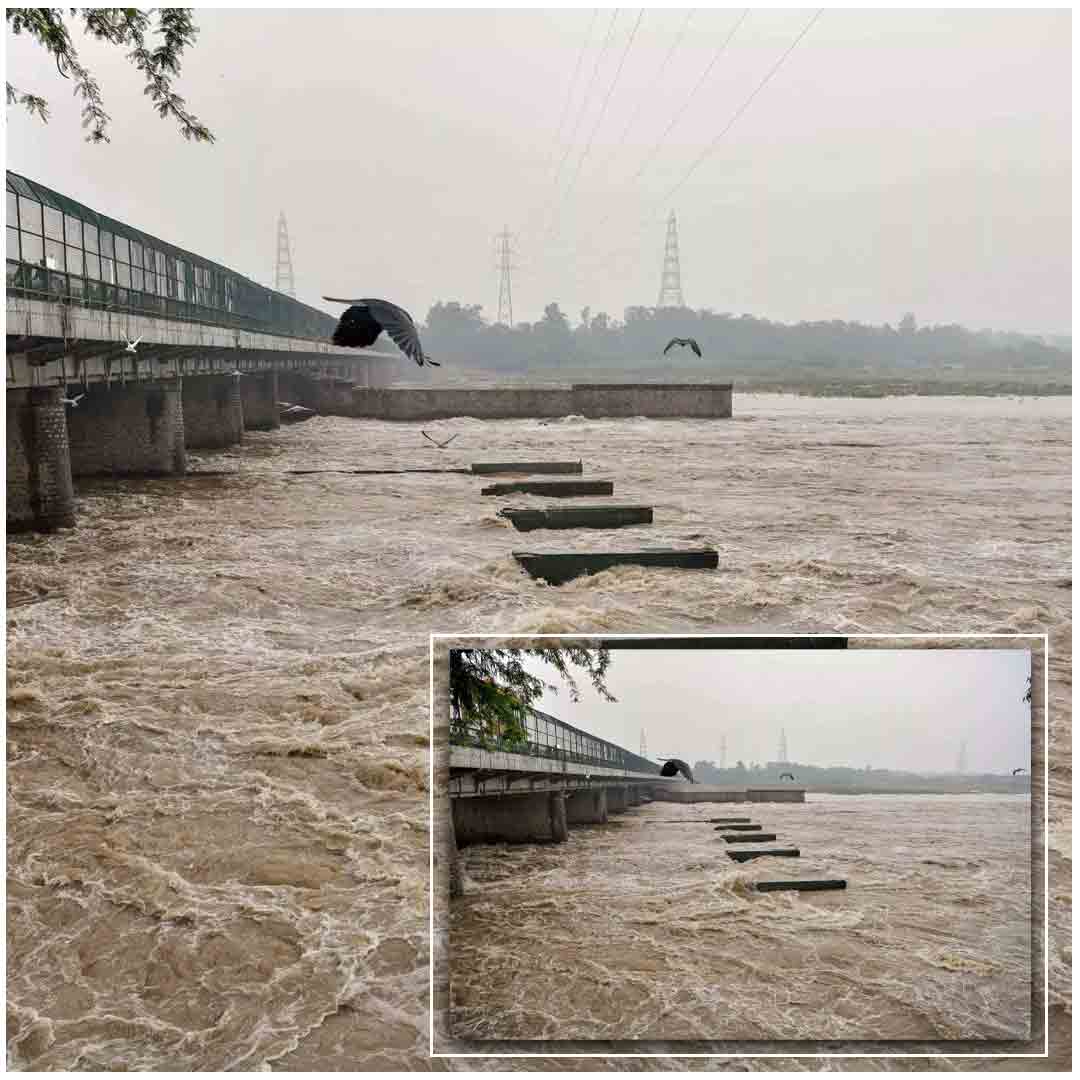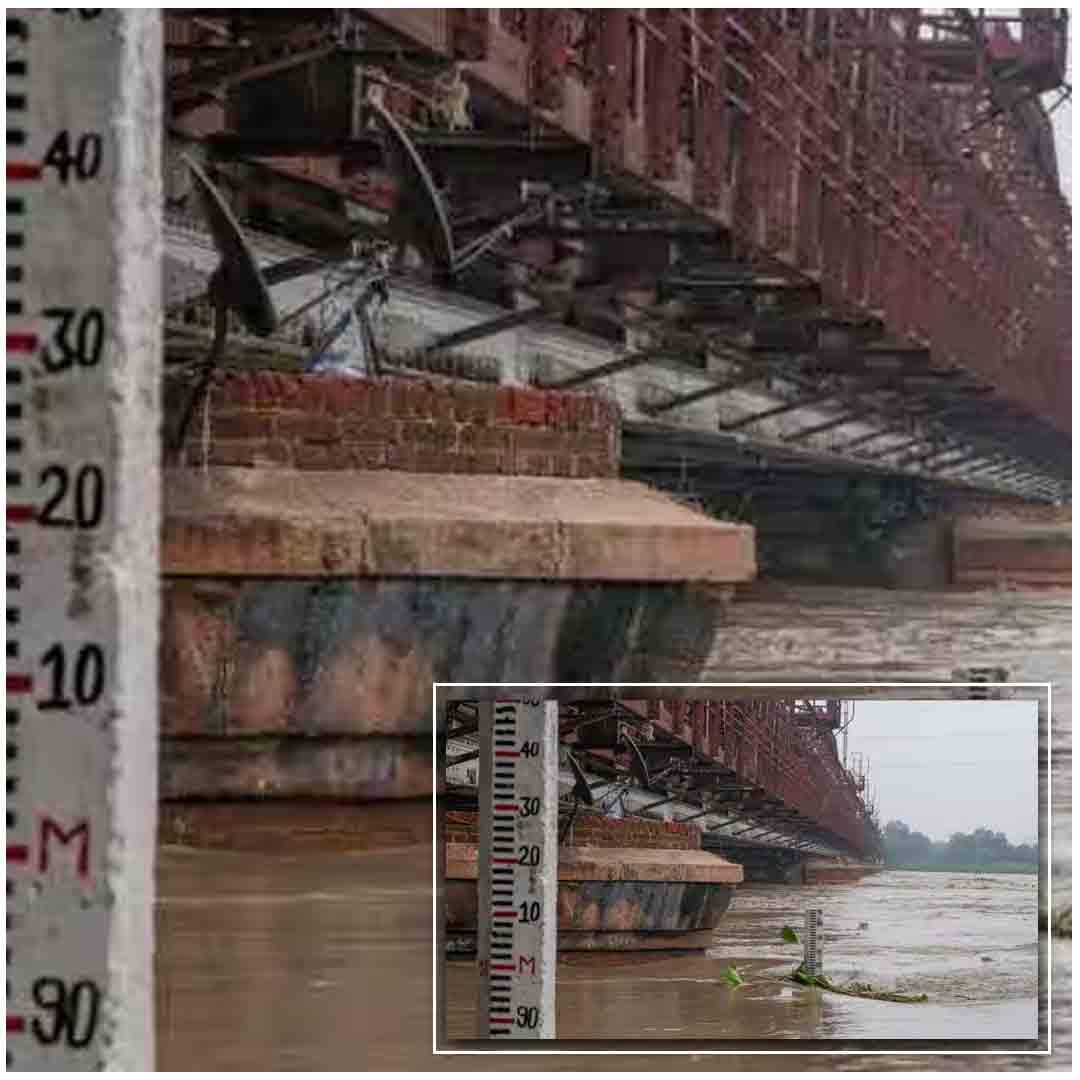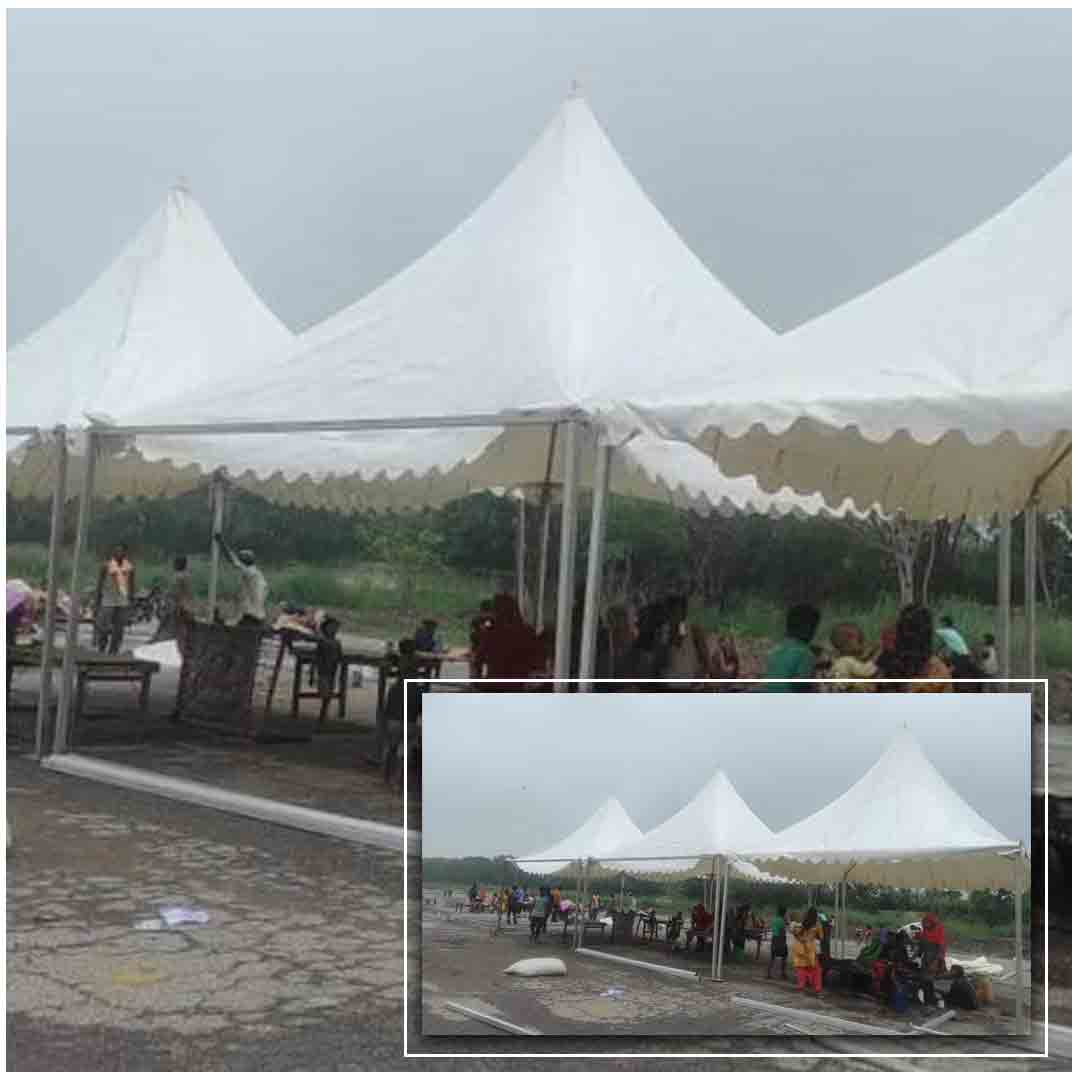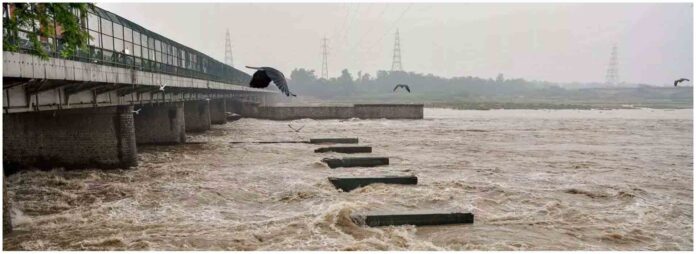Delhi is facing a flood-like situation as the water level of the Yamuna river has increased significantly due to heavy rainfall in the past few days. The water level has crossed the danger mark of 205.33 metres and is expected to rise further. The Delhi government has issued a flood alert and evacuated people from low-lying areas along the river.

What is the current situation of the Yamuna river?
The Yamuna river, which flows through Delhi, receives water from several tributaries and barrages upstream. Due to the incessant rainfall in the catchment areas, the water level of the river has risen rapidly in the last few days. According to the Central Water Commission (CWC), the water level recorded at Delhi’s Old Yamuna Bridge on Friday was 205.59 metres, and it touched 206.24 metres on Saturday. The water level started rising on Thursday, and breached the danger mark on Monday.
The CWC had estimated that the Yamuna could swell to 207.99 metres on Wednesday night, which would be an unprecedented high flood level. However, exceeding the estimate, the water level breached the mark of 208.05 metres on Wednesday evening, marking it as an ‘extreme situation’ for Delhi as flood water entered the city. On Thursday morning, the water level breached the mark of 208.46 metres, with flood water entering Delhi’s ITO.
The main reason for the increase in water level is the release of water from the Hathnikund barrage in Haryana, which is located about 200 km upstream of Delhi. The barrage releases excess water from the Yamuna and its tributaries into the river downstream. Due to heavy rainfall, the barrage has released more than 3 lakh cusecs of water in the last few days, which has reached Delhi in less time than usual due to encroachment and siltation along the river.

What are the impacts and challenges of the flood?
The flood has affected several areas of Delhi, especially those near the river banks. The authorities have evacuated more than 750 people and 250 cattle from low-lying areas and shifted them to relief camps. Several schools have been closed and traffic has been disrupted due to waterlogging. The flood has also damaged crops and properties along the river.
One of the major challenges posed by the flood is the drinking water crisis in Delhi. The Delhi Jal Board (DJB) has announced that three water treatment plants in Wazirabad, Chandrawal and Okhla have been closed down due to high turbidity and pollution in the Yamuna water. These plants supply water to more than half of Delhi’s population. The DJB has advised people to use water judiciously and store enough water for their needs.
Another challenge is to ensure the safety and health of the people living in flood-prone areas. The authorities have deployed boats, divers and rescue teams to help people in distress. They have also issued advisories to avoid contact with flood water as it may contain harmful bacteria and chemicals. They have also warned people not to venture near the river or cross bridges over it.
What are the measures taken by the government?
The Delhi government has taken several measures to deal with the flood situation and mitigate its impacts. Some of these are:
• Chief Minister Arvind Kejriwal has convened an emergency meeting of the Delhi Disaster Management Authority (DDMA) to discuss the flood situation and review the preparedness of various agencies.
• Lieutenant Governor Anil Baijal has directed all district magistrates and sub-divisional magistrates to ensure timely evacuation and relief of affected people.
• The government has set up 24×7 control rooms at various locations to monitor the situation and coordinate with other agencies.
• The government has also requested the Centre to intervene and ensure that the water released from Haryana’s Hathnikund barrage is slowed down or stopped.
• The government has also asked people to cooperate with the authorities and follow their instructions.























